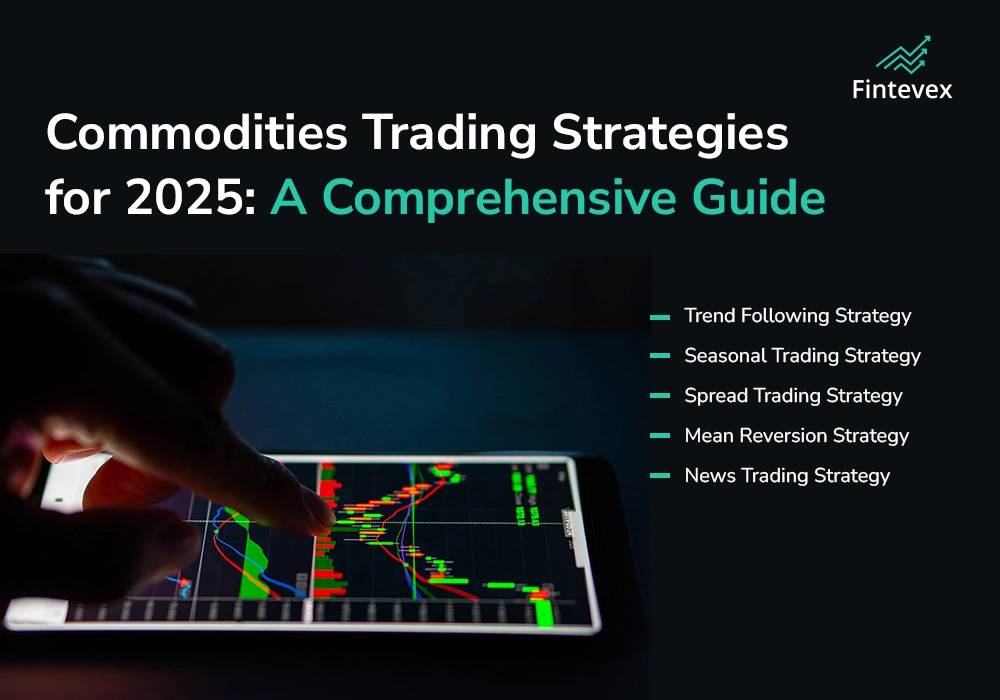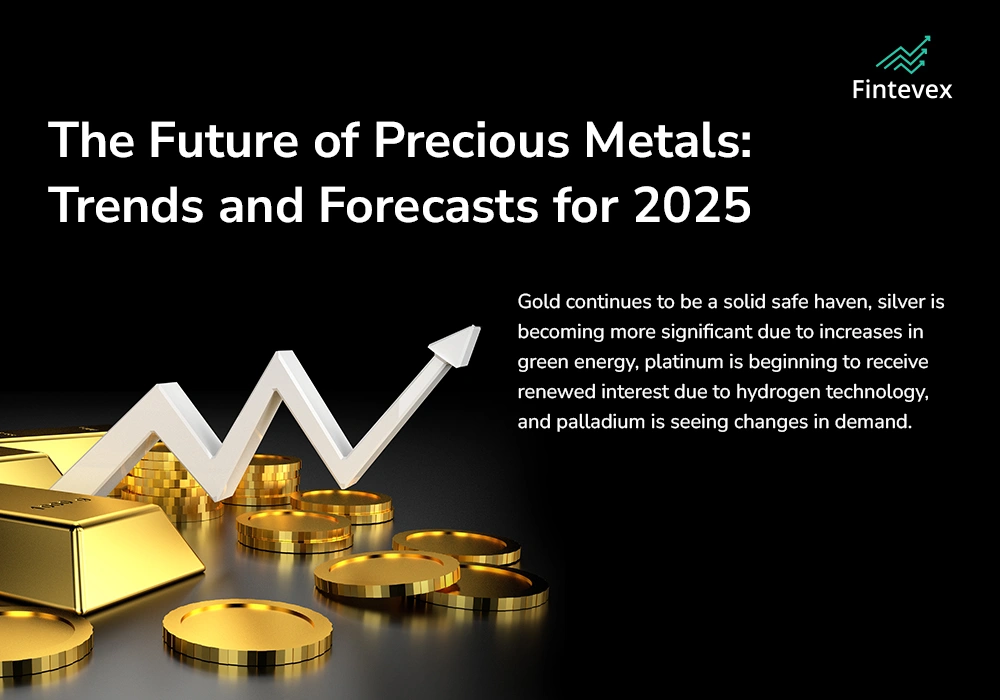The commodities market has always remained an attractive area for investors looking for portfolio diversification, inflation hedging, and profit opportunities. It encompasses everything from energy and metals to agricultural products and livestock, all of which are uniquely shaped by worldwide supply and demand, geopolitical factors, and macroeconomic conditions.
As we move into 2025, traders will have to learn to cope with increased volatility, advancement in technology related to trading, as well as changes in the geopolitical environment. This piece delineates the most important approaches to deal with commodities trading, as well as the management of risks and market movers to follow next year.
Commodities trading refers to buying and selling raw materials or primary goods by means of various financial instruments, including futures contracts, spot markets, and exchange-traded funds (ETFs). Likewise, with stocks or bonds, investors familiar with commodities trading expect economic returns. Unlike stocks and bonds, however, commodity prices are dictated by external factors like weather, international politics, and global economic events.
The two main participants of the commodities markets are hedgers and speculators. Farmers, mining companies, and energy producers fall into the hedging category of the market and aim to protect themselves from price changes that can prove detrimental to their operations. Speculating includes hedge funds and retail traders who hope to benefit from short-term price shifts and use trend analysis and technical analysis to guide their trades.

Pivotal Strategies for Key Commodities Trading for 2025
Trend Following Strategy:
Trend following is the most popular approach in commodities trading because it seeks to take advantage of long-term price movements. This strategy follows the price using key indicators such as moving averages, Relative Strength Index (RSI), and even Bollinger Bands in order to know when to buy or sell.
With the drastic advancement in AI predictive analysis, the shifts in trends are easier to pinpoint, making it much easier to follow trends. In addition, it is crucial for discipline bot traders to implement stop-loss orders due to the sharp swings in the AI driven markets from the geopolitical uncertainties and supply chains issues.
Seasonal Trading Strategy:
Market players have probably experienced the impact of business holidays on stock price movements as they are closely interconnected with changes in weather, harvest, and consumer attitudes towards various goods. For example, agricultural commodities such as wheat and corn have established Price Cycles, which begin during sowing and reach their peaks throughout the harvesting period. Moreover, bot traders know that winter calls for increased demand for natural gas for heating and summer holidays prefer to travel, which leads to higher gasoline prices.
The bot traders who exploit seasonility must study the recurences of price movements based on historical data. But policy changes or extreme weather conditions may also influence fundamental seasonality thus require a flexible approach in terms of execution.
Spread Trading Strategy:
Spread trading means trading related commodity contracts simultaneously magic to take advantage of price difference profit. Spread trading can be divided into two primary categories: inter-commodity spreads and calendar spreads.
In Inter-commodity spreads, two or more related commodities such as crude oil and gasoline are traded in the expectation that the prices of the two will move together or have some level of correlation.
Calendar spreads are the simultaneous purchase and sale of future contracts for the same commodity with different expiration dates in order to profit from changes in supply and demand over time.
This strategy helps in dealing with the volatility and risk. The spread trade is less risky than direct trading in futures, as price change in one leg of the trade offsets change in price in the other leg of the trade.
Mean Reversion Strategy:
The mean reversion is commonly known as a strategy where traders will look for commodity prices that have reached extremes and buy or sell them, banking that they will revert back to their historical averages. Traders use indicators like the Bollinger Bands and Moving Average Convergence Divergence (MACD) to pinpoint overbought or oversold conditions.
While this strategy works perfectly in a stable market, it may be dangerous with high volatility or drastic changes in supply and demand. By 2025, those attmepting mean reversion will have to deal with markets that are radically changed by energy transition politics, inflation, and global crises.
News Trading Strategy:
Trade policies, geopolitical issues, and economic forecasts or reports are powerful shifters of commodity prices. Traders who pay attention to the news and monitor the macroeconomic climate make money off price changes caused by supply chain issues, shifts in OPEC output quotas, or government support on agricultural goods.
As of 2025, traders have the ability to understand the effects of breaking news on the market, making them more prepared for any currency risk. Sadly, commodities are every volatile so any shifts in news will result in commodity prices drastically changing.

Risk Management in Commodities Trading!
A wide range of tools is necessary to trade commodities successfully and a disciplined attitude towards risk management is a necessity. Unlike equities that are more stable, commodities are extremely volatile requiring risk aversion techniques.
Sizing and Control of Leverage
Profits can be massive with the use of leverage. Unfortunately, potential losses do increase. Traders must ensure that too much leverage is not granted where loss could seriously threaten their initial position. Find a middle ground where the correct mix of risk and geared position sizing works in your favour.
Stop-Loss and Take-Profit Orders
In volatile markets, pre-defining loss limits can decrease the profits downside risks. Take-profit orders ensure that the desired earnings are made with minimal risk before the market changes. It is helpful in mitigating impact on losses from immediate and unexpected market changing conditions.
Diversification Across Commodities
Having diverse positions across different metals, agricultural products and energy assets decreases overall risk. A sudden downturn in one sector is likely to be offset by a sudden increase in the other sector, thus balancing overall a portfolio, due to varying economic factors affecting various sectors differently.
Monitoring Macroeconomic Indicators
Commodities are greatly affected by the rate of inflation, the policies of the central bank, and the state of the world economy. Traders must pay attention to the reports on the U.S. Consumer Price Index (CPI), interest rate actions taken by the Federal Reserve, and any geopolitical movements as these are important for their strategies.
Key Commodities to Watch in 2025
Crude Oil & Gas
The energy transition in the world, policies on oil and gas production of OPEC +, and conflicts around the world will affect oil and gas prices long term. Even though, there are many risks associated with it, there are a number of changes that traders can greatly benefit from.
Gold and Silver
Amid the inflation and uncertain economic conditions, precious metals can always be trusted. Gold is still the number one go to asset during times of crises, whereas silver is becoming more widely used for industrial purposes and especially in renewable energy midstream.
Lithium & Copper
In tandem with the expansion of electric vehicles (EVs) and alternative energy sources, there is an expected increase in the demand for lithium and copper. Constraints in supply and geopolitical control of the mining sector could result in price inflation of these metals, which are already deemed critical.
Agricultural Commodities
Prices for wheat, corn, soy, and coffee are likely to be sensitive to climate change and food supply chain disruptions. Traders will need to pay attention to government regulations and policies as well as weather changes that have an impact on agricultural yield.
Conclusion:
Trading commodities in 2025 poses unique challenges, but at the same time offers potentially high returns. Traders who want to succeed and minimize their risks can utilize better-defined methods like trend following, seasonal trading, and news-based analysis. Yet, even with all these methods in hand, effective risk management is of utmost importance, hence the need for diversification, setting stop-losses, and keeping an eye on the overall economic conditions to achieve sustainability.
With the ongoing technological innovations and political turmoil, smarter trading devices for commodities are bound to surface. Profiting through commodity trade will surely depend on innovation and smart trading strategies in the future.
















